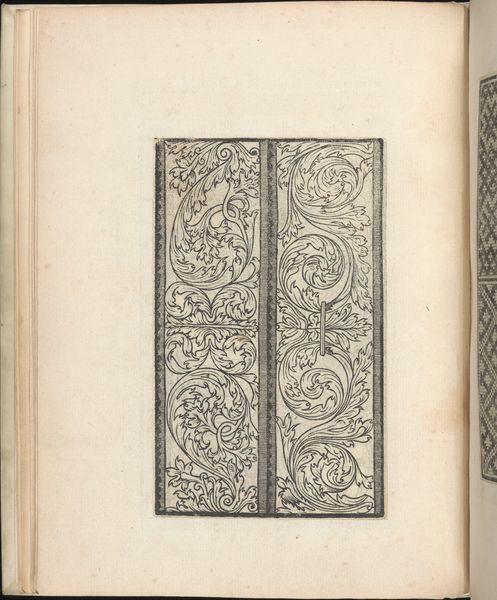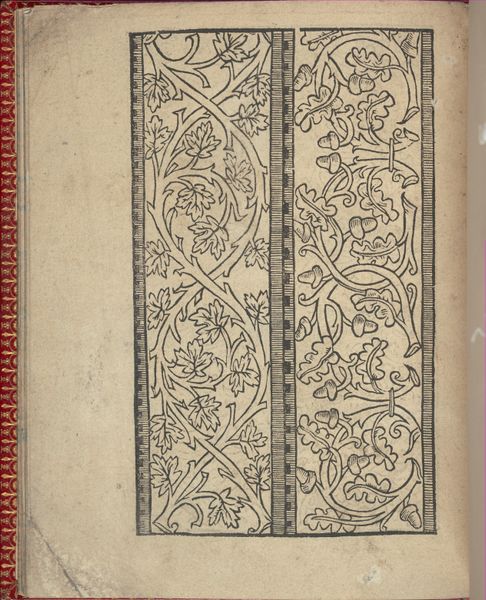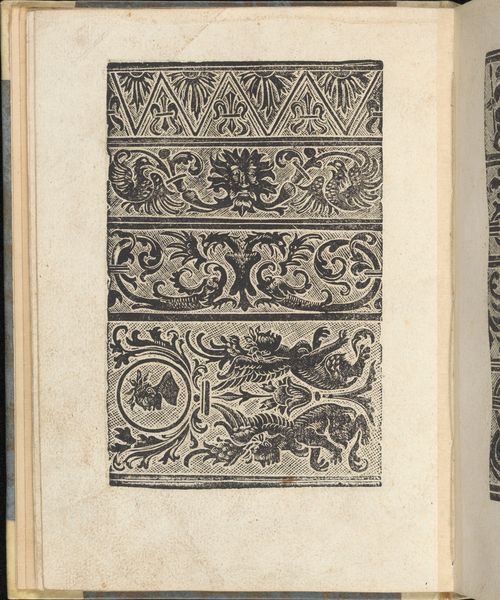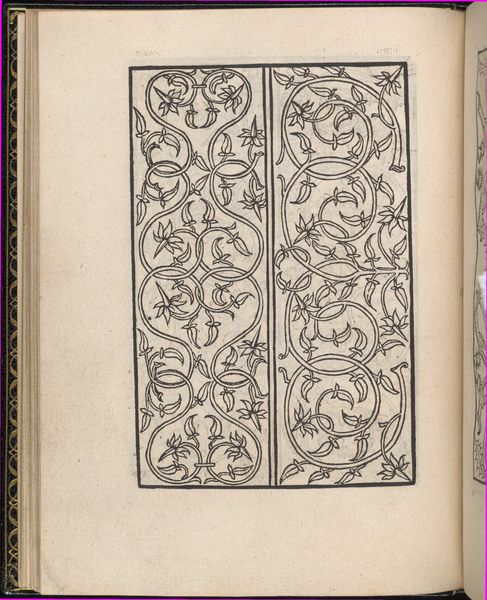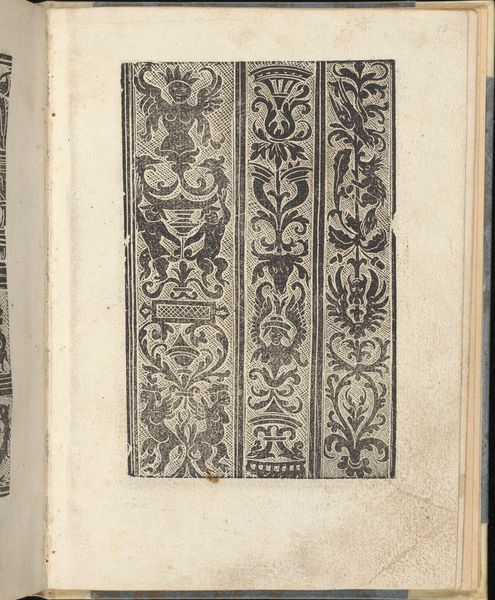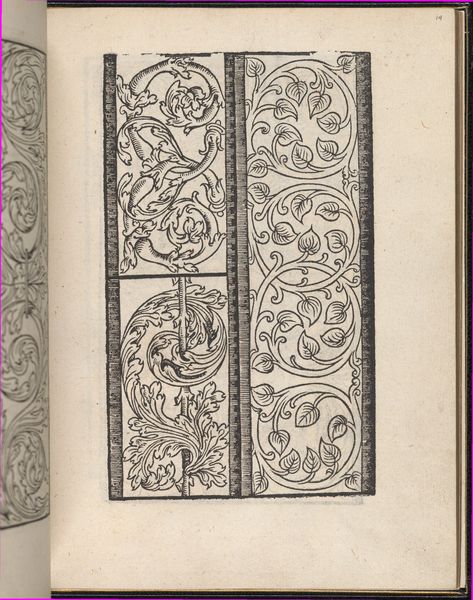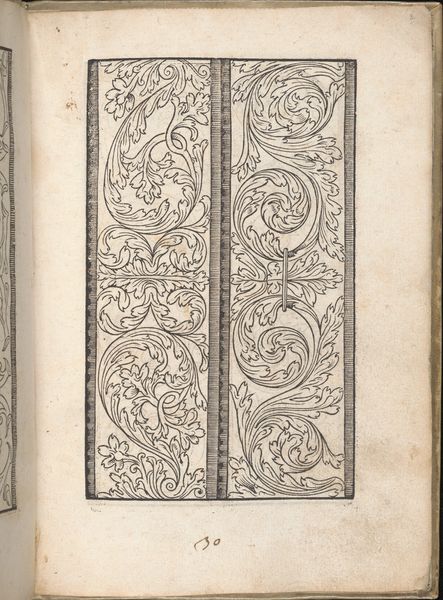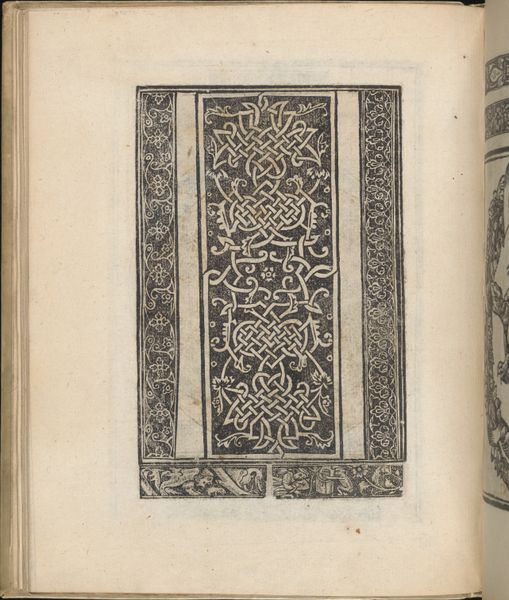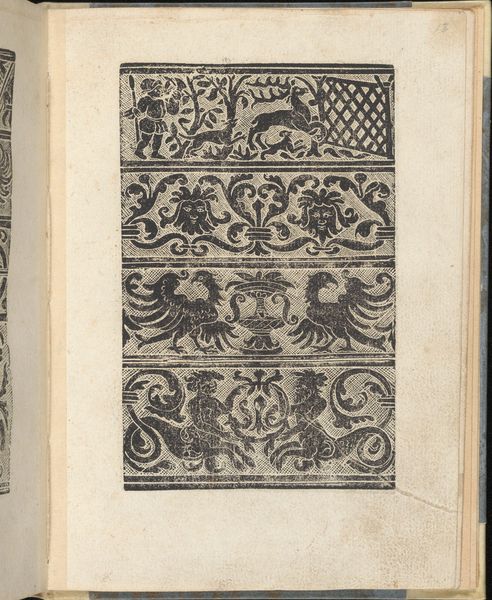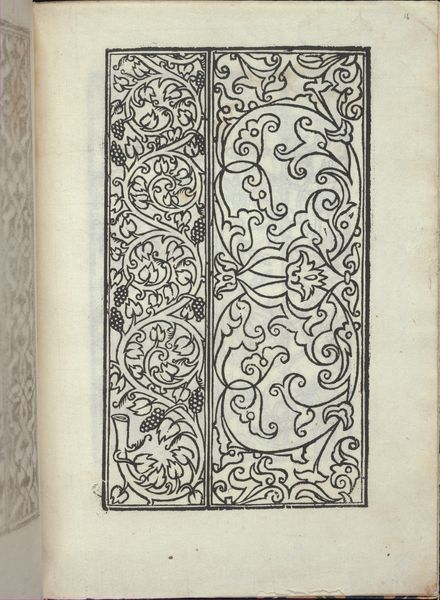
drawing, print, engraving
#
drawing
# print
#
11_renaissance
#
engraving
Dimensions: 9 5/16 x 7 1/4 x 15/16 in. (23.7 x 18.4 x 2.4 cm)
Copyright: Public Domain
This is page three from 'Esemplario di lavori,' a book of embroidery designs created by Nicolò Zoppino in Venice during the early 16th century. These pattern books emerged during the Renaissance, a time when printed images allowed for wider access to visual culture. Embroidery was not merely decorative; it was deeply intertwined with identity, particularly for women. Skill in needlework signified virtue, patience, and domesticity, qualities highly valued in women of the period. The motifs found in these patterns, such as vines and leaves, often carried symbolic meanings related to nature, growth, and the cycle of life. Consider the labor-intensive process of embroidery itself. It was a form of creative expression but also a marker of status. Wealthier women would have had the leisure time to devote to such intricate work, or the means to employ others to do so. Reflect on how these designs might have been used and adapted by different individuals, each bringing their own experiences and interpretations to the craft. It serves as a reminder of the complex interplay between art, gender, and social class in shaping our cultural heritage.
Comments
No comments
Be the first to comment and join the conversation on the ultimate creative platform.
